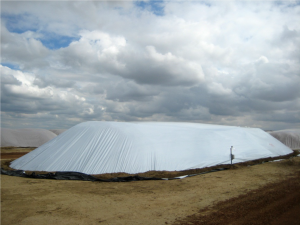Luke Milliron, UCCE Orchards Advisor Butte, Glenn, and Tehama Counties
Bruce Lampinen, Tree Nut Extension Specialist, Plant Sciences Department, UC Davis
As of late June, a huge crop (3.2 B pounds!) is forecast for 2021. With another record statewide crop to be shaken, swept, and collected starting in August, will you and your handler be prepared? Research by Bruce Lampinen (UCCE Specialist, UC Davis) and others has shown that properly dried nuts are the key to maintaining quality and grower returns during stockpiling. Best practices help avoid Aspergillus growth and resulting aflatoxin contamination, and concealed damage to kernels. Aflatoxin and concealed damage reduce profits at a time when margins are critical. Maintaining a high-quality product is also key to marketing and moving a record crop at the best possible prices to growers. This may be a particularly challenging year for drying nuts if fire smoke slows nut drying as occurred in 2020.
At Harvest:
Let hulls dry completely on the orchard floor before pick up. Do not pick up and stockpile nuts with a hull moisture above 12%, kernel moisture above 6%, or total fruit (hull and kernel) moisture above 9%. For reference, hulls snap at or below 11-12% moisture. When sampling for moisture level, it is critical to take a representative sample. For windrows, sample from both the top, as well as the bottom of the windrow, where moisture levels can be 2% greater. For almonds that have not been windrowed, sample both in row middles and adjacent to tree trunks on the north side of the canopy where moisture levels may again be 2% higher. Orchard floor drying is faster with north/south oriented rows and where canopy light interception does not exceed 80%.
If almonds are picked up at a total fruit moisture above 9%, do not stockpile. Instead spread out the crop in a dry area that allows for turning and spreading. If needed, take the crop to a dryer. For more information on rain at harvest, including a table of prescribed actions based on your harvest stage, see this article.
Stockpile Management:
The record crop probably means that more crop than ever before will have to be stockpiled. If covered to fumigate for navel orangeworm control or because of a forecast rain, take steps at setup to avoid moisture accumulation. Ideally, stockpile locations are slightly raised to prevent puddling around the edges. Stockpiles should also be free of trash and placed away from equipment. The long axis of stockpiles should be oriented north-south to get sun on all sides. Piles should have smooth and flat tops, avoiding low spots that accumulate condensation. Finally, when needed, the use of white on black tarps is best, because they help avoid severe temperature fluctuations that increase condensation.
If a stockpile is built, monitor the relative humidity near the outer edge, where swings in temperature and the risk of condensation are greatest. If moisture levels are above the thresholds, open the tarps up during the day and close them at night, corresponding to low and high relative humidity, respectively. More details can be found in the Almond Board of California’s Stockpile Management Best Practices.

Photo 1. Covered stockpiles: Designed to avoid moisture accumulation with N/S orientations, flat/smooth tops, and are ideally on a raised surface to avoid ponding (photo courtesy of Almond Board of California).


Leave a Reply